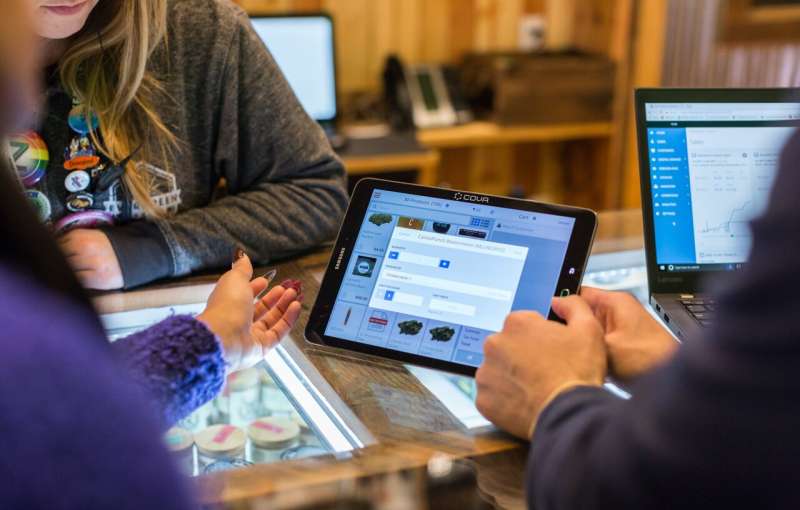Safety concerns about youth access to online marijuana dispensaries

Researchers from the Steven and Alexandra Cohen Children’s Medical Center of New York, Lake Success, have looked into age verification procedures and the potential for underage youth access to online marijuana dispensaries in the United States.
In the paper, “Access to Marijuana by Minors Via Online Dispensaries,” published in JAMA Pediatrics, researchers performed a cross-sectional analysis of data collected from the websites of 80 online marijuana dispensaries in 32 states. The data included dispensary locations, shipment regions, product types, age restrictions and verification, delivery and pickup options, warnings and disclaimers, and payment methods.
Upon arriving at a dispensary website, 56 (70.0%) of the 80 websites analyzed prompted users to click yes to confirm they were of legal age. It is unclear how much of a deterrent this age verification prompt is in practice, though if youthful memory serves, it may operate more as a confirmation that the correct website has been found.
Three websites (3.8%) asked for a specific birthdate. As a side note, sharing personal identifying information with a website is never a good idea unless absolutely necessary, and even legitimate aged individuals are likely to use an alias birthday for such verification prompts.
None of the sites required verified age documentation to enter the website, which might be viewed as a high bar of information sharing just to access a website and a practice likely to be misused by online identification thieves if such validation ever became common.
Age verification was required when completing a purchase or upon receiving a marijuana product from 53 dispensaries (66.3%), and 15 (18.8%) did not require any formal age verification during the purchasing process.
Age verification methods included government-issued identification at 40 dispensaries (50%), a medical marijuana identification number was needed at 21 (26.3%), and self-reported birthdate was sufficient at 8 (10%).
Fifty-three dispensaries (66.3%) offered a pickup option and 54 (67.5%) offered delivery. Half of the dispensaries provided legal information, and 34 (42.5%) supplied warnings or disclaimers regarding the safety of purchasing or using marijuana products. Twenty-two (27.5%) offered delivery across state lines from the dispensary’s location.
Websites of 54 dispensaries (67.5%) listed their policies regarding the sale of marijuana to minors. Of these, 13 (24.0%) did not ask users to verify their age to enter the website, and 13 (24.0%) did not verify their age before purchasing or receiving the product.
Nontraceable payment methods (i.e., cash, prepaid cards, cryptocurrency) were accepted by 67 dispensaries (83.8%). The nontraceable payments, as surreptitious as it might sound, could be the result of uncertainty in federal law that has put banks in the uncharacteristic position of not wanting to be involved in transactions or deposits related to the marijuana industry.
Products available by online dispensaries included e-cigarettes (74 dispensaries), edibles (75 dispensaries), and medical formulations (44). Of the 75 dispensaries offering edibles, 50 (67.0%) used colorful packaging that researchers highlighted could be attractive to minors. Edibles included gummies or candies (72 dispensaries), nonalcoholic drinks (40 dispensaries), and chocolates were on the menu at 59.
Most online marijuana dispensaries in the study lacked adequate age verification features, and most accepted nontraceable payment methods, enabling youth to hide their transactions. Almost 1 in 5 online dispensaries required no formal age verification at any stage of the purchasing process.
The authors conclude, “It is imperative to require strict age verification procedures prior to cannabis purchases online and to establish stringent surveillance of online marijuana dispensaries to protect youth.”
How would it protect the youth?
One of the reasons often cited for marijuana legalization has been an effort to move the drug away from the black market. Providing access to marijuana in a regulated manner helps assure the safety of the product, the safety of citizens purchasing the product and diverts funds from a potentially criminal underworld to one of regulated businesses with taxable sales revenue.
California has received around $4.6 billion in additional tax revenue since legalization took effect, according to a California Department of Tax and Fee Administration 2022 Report. Cannabis taxes are used for specific purposes such as health and education services and drug treatment programs.
The $4.6 billion tax figure collected in California is just a fraction of the proceeds that used to flow through the illegal drug trade, suggesting that legalization must have an enormous fiscal impact on the black market.
Amid a crisis in America where accidental overdose fatalities of drugs laced with fentanyl are on the rise, many legal adult users of marijuana are likely thankful that a more regulated and controlled dispensary system is available to them.
The question not asked or answered regarding age verification is where do teenagers get marijuana if not from a dispensary? While not an argument for legalizing youth marijuana use, it should be acknowledged that youth marijuana use is prevalent and that the prevalence is not new.
According to the University of Michigan’s “Monitoring the Future National Survey Results on Drug Use,” a CDC-cited report spanning 1975 to 2022, the prevalence of marijuana use in 2022 was 38.3% among 12th-grade students. As high as that might seem, it has been much higher in the past.
In 2012, 12th-grade marijuana use was reported at 45.2%, 47.8% in 2002, 32.6% in 1992, and 58.7% in 1982. The class of 1979 had the highest reported marijuana use at 60.4% of students, according to the national survey.
Access to marijuana over a long history of prohibition has clearly not been an obstacle for American youth. If loopholes exist that allow underage access to a safer legal marketplace there may be arguments against closing them entirely, especially when considering the alternatives.
More information:
Ananya Terala et al, Access to Marijuana by Minors Via Online Dispensaries, JAMA Pediatrics (2023). DOI: 10.1001/jamapediatrics.2023.3656
Journal information:
JAMA Pediatrics
Source: Read Full Article


